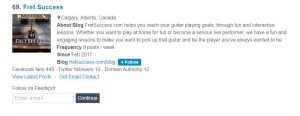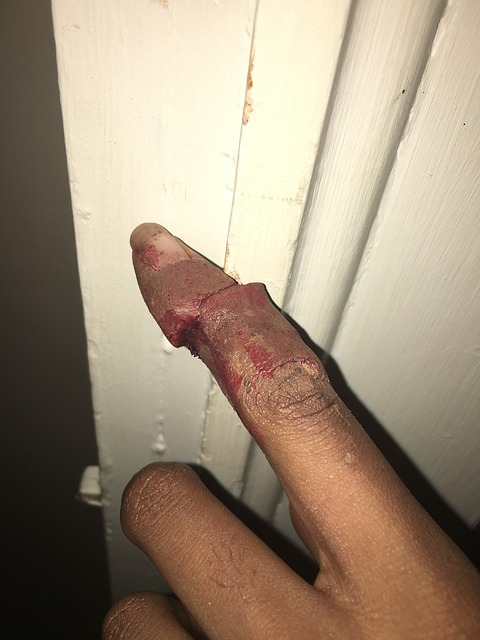Hiwatt Leeds 25R Review – Classic British Tone in a Budget Amp?
The name Hiwatt is iconic in the world of British guitar tone. Known for their punchy, high-headroom cleans and rich harmonic drive when cranked, Hiwatt amps have shaped the sound of artists like David Gilmour, Pete Townshend, and Jimmy Page. The Leeds 25R, however, is a different beast entirely – a solid-state, budget-friendly head that aims to bring that classic Hiwatt tone to the everyday guitarist. But does it actually deliver?
Key Features
The Leeds 25R is a compact 25-watt solid-state amp head with two channels, built-in digital reverb, a 3-band EQ, and a contour knob for midrange shaping. It also includes aux input and headphone output, plus speaker outputs for 4 and 8 ohms. It’s light, portable, and comes in at under $200 CAD – which already sets it up as a contender in the budget amp category.
Build and Design
There’s nothing flashy about the Leeds 25R – and that’s part of its charm. It’s simple, solid, and focused on the essentials. Controls are clear and familiar, with a front panel featuring volume, EQ, reverb, and gain for each channel. The contour control allows you to scoop or boost the mids depending on your taste or guitar setup.
You get a headphone out that mutes the speaker (perfect for silent practice), aux in for backing tracks, and speaker outs for 4 or 8 ohm cabinets. It’s worth noting there’s no 16 ohm output, which might limit some cabinet pairing options. There’s also no direct out or cab sim – something that would have been a welcome addition in 2025 – but at this price, it’s hard to be too picky.
Sound and Performance
Clean Tones
Plugging into the clean channel with a PRS, I was immediately struck by the clarity and fullness of the tone. It’s got that signature Hiwatt sparkle and punch, especially with single coils. There’s good headroom and the EQ gives you enough control without overcomplicating things. The reverb, while digital, adds a nice dimension to the sound and stays musical across its range – usable at all levels and never too overpowering.
Overdrive and Gain
This is where the amp truly surprised me. At lower gain settings, the overdrive can sound a little fizzy – typical of many solid-state amps in this range. But push the gain past halfway and the Leeds 25R starts to shine. You get rich, full distortion that’s articulate and tight enough for rock and even heavier tones. The contour control helps you fine-tune the mids for everything from vintage crunch to modern scooped tones. I found the amp particularly responsive when paired with humbuckers, offering enough gain to comfortably sit in a live mix or studio session.
The only weak spot was the mid-gain range, where the amp struggles to replicate the smooth tube-style breakup you might expect from higher-end gear. But for clean tones and full high-gain sounds, it absolutely punches above its weight.
Practical Use and Volume
At 25 watts, the Leeds 25R is surprisingly loud. Through a 2×12 cab, it had no trouble filling a room and would hold its own in rehearsal or small venue settings. For live use, it would ideally be mic’d, but there’s more than enough volume for most players. As a practice amp, it’s a no-brainer. For studio use, the clean tones and high gain options offer a lot of flexibility with very little tweaking required.
Headphone and Aux Features
The headphone output is functional, but not impressive. The tone through headphones is fairly brittle, and there’s no separate volume control – meaning you’ll need to adjust the master volume for quiet play. It gets the job done for late-night sessions, but don’t expect studio quality. Similarly, the aux in feels a bit dated in a world of Bluetooth connectivity. It’s a nice inclusion, but I found myself wishing it could wirelessly pair with a phone or tablet. Again, not a dealbreaker, but something to note.
What Could Be Improved
Aside from the headphone and aux quirks, the biggest limitation is the lack of a 16 ohm output. Many cabs – especially vintage or boutique ones – run at 16 ohms, so it would have been nice to see that option. A direct out or simple cab sim would’ve been an excellent inclusion for players wanting to record or run direct to a PA. It’s also worth noting that the amp doesn’t include an effects loop, but at this price, it’s hard to hold that against it.
Verdict
The Hiwatt Leeds 25R is a compact, affordable amp that offers a lot more tone than its price tag would suggest. The cleans are genuinely impressive – dynamic, sparkly, and full of character. The high-gain tones are thick and articulate, and the amp feels great to play through. It’s not a tube amp, and it doesn’t pretend to be – but if you want something that nails the basics with a clear nod to British rock history, this is a solid bet.
It’s perfect for home players, beginner gigging musicians, or even experienced guitarists looking for a great-sounding backup head. With just enough flexibility and a tonal profile that leans into Hiwatt’s roots, the Leeds 25R is an easy recommendation in the under-$200 category.
Pros
-
Fantastic clean tones with surprising depth
-
High-gain sounds are tight and usable
-
Simple, intuitive controls
-
Lightweight and affordable
-
Great platform for pedals
Cons
-
No 16 ohm speaker out
-
Headphone tone is brittle
-
Aux input feels outdated
-
No direct out or cab sim
Thanks to Guitarworks Canada
Big thanks to Guitarworks Canada for supporting the channel and providing the Leeds 25R for review. They’re an official Hiwatt dealer and offer free shipping across Canada, so if you’re interested in picking one up, check them out.
Watch the full video demo here: https://youtu.be/TLw8iHWJgQk?si=obvqoOff2L4mz4N8















